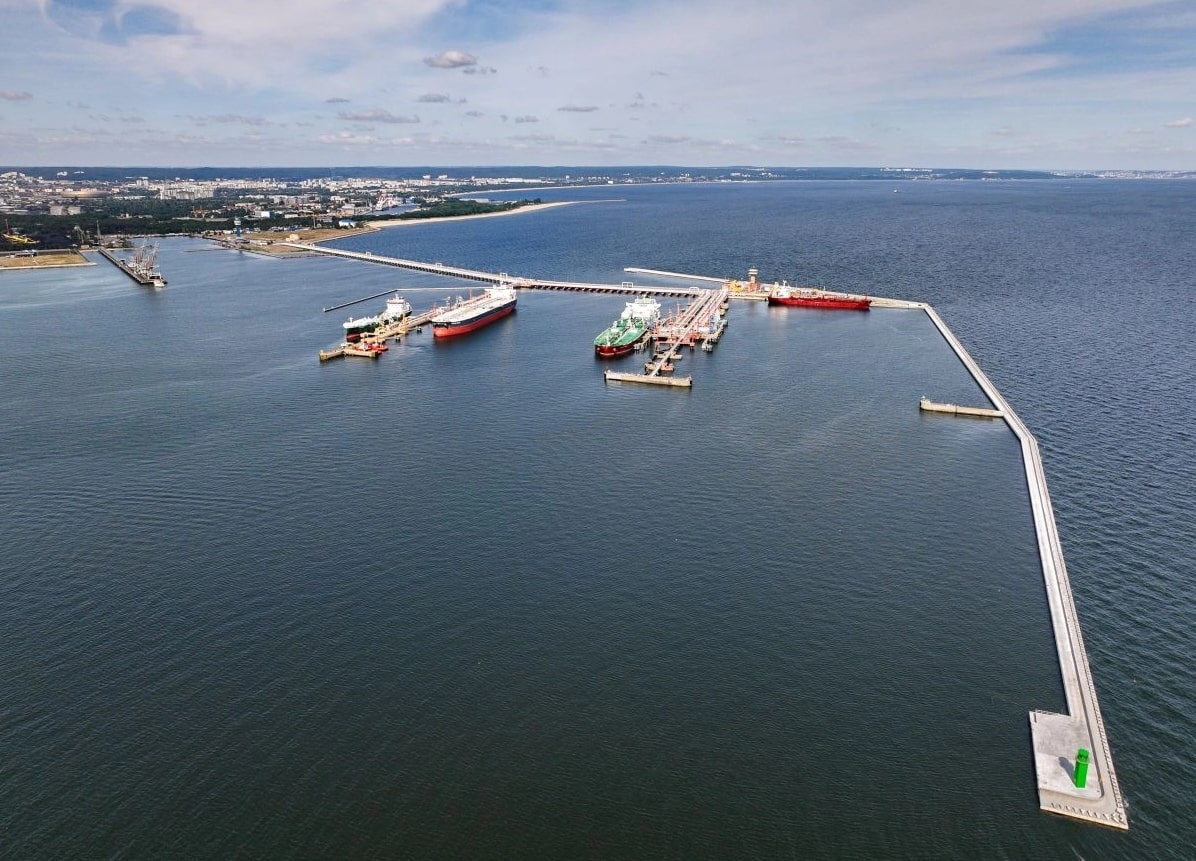
The highest percentage increases were recorded in agricultural goods (a 60% increase). Grain terminals operated at full capacity throughout the year, directly linked to the blockade of Ukrainian ports on the Black Sea and the transit of Ukrainian grain through Polish ports. In total, grain transshipments at the Port of Gdańsk amounted to almost 3.1 million tons during the year (compared to approximately 2 million tons the previous year).
However, liquid fuels had the greatest impact on the overall result of the Port. They increased by 47%, representing a transshipment volume of 37.6 million tons (compared to 25.5 million tons in 2022). Naftoport has become a petroleum hub for the region. It is through the Gdańsk fuel terminal that the refining needs of both Poland and our closest neighbors are secured. Naftoport transshipped a total of 36.6 million tons of crude oil and fuels last year. Some of this cargo constitutes deliveries to German refineries. After being cut off from supplies via the "Friendship" pipeline from Russia, Poland has become their most important gateway.
As for other energy resources flowing through the Gdańsk port to Poland, there were no spectacular increases comparable to those in 2022. Market needs have stabilized. Coal imports at the Gdańsk port remained at a level similar to the previous year. Coal terminals handled 13.3 million tons, including 12.5 million tons in terms of imports. This represents a 1% increase compared to 2022.
The situation is similar with general cargo, where transshipments reached 22.9 million tons, indicating a slight correction. Container terminals recorded a 2.5% increase, with transshipments reaching nearly 20.5 million tons. There is also a slight difference in the category of other bulk cargo - 3.5 million tons (a decrease of 0.9%).
— As you can see, we fully utilize access to the sea. I trust that the Port of Gdańsk will exceed the 100 million ton transshipment barrier in the coming years and become a leader in the Baltic Sea region, not just in terms of containers. I hope it will be able to compete on an equal footing with ports from the top tier of Europe — says Łukasz Malinowski, President of the Port of Gdańsk.
Record transshipments mean record financial results. ZMPG S.A. recorded a net profit of 224.4 million złoty for 2023. For comparison, in 2021, the profit was more than three times lower (at 65 million złoty).
The company would not have achieved such good results without investing in port infrastructure. Since 2018, ZMPG S.A. has spent nearly 1.3 billion złoty on investments and renovations, including 824 million złoty allocated to projects co-financed by EU funds from the CEF.
— With EU support, we have expanded and deepened the waterway, rebuilt 5 km of quays, and improved navigation conditions in the Inner Port. This allows larger ships to dock at this part of the port. In 2021, we completed the expansion and modernization of the road and rail network in the Outer Port, spending 167 million złoty, which included the construction of 7 km of roads, 10 km of tracks, and 4 new viaducts. Over 82 million złoty was spent on the expansion of the Industrial Quay area, completed at the end of last year. This project significantly improved land communication and streamlined transshipments. Additionally, it will allow for the commercialization of new investment areas. In 2023, as part of CEF 2, we received nearly 100 million euros in grants for the expansion of four additional quays in the Inner Port, with a total length of nearly 2 km, along with railway infrastructure. The planned period for investment implementation is 2023-2027 — calculates Kamil Tarczewski, Vice President of the Port of Gdańsk.
Investments are fundamental for the port business. They increase the port's competitiveness and share in transshipments. Thanks to them, the Port of Gdańsk has become the fastest-growing European port of the last decade, with growth dynamics at 167%.


